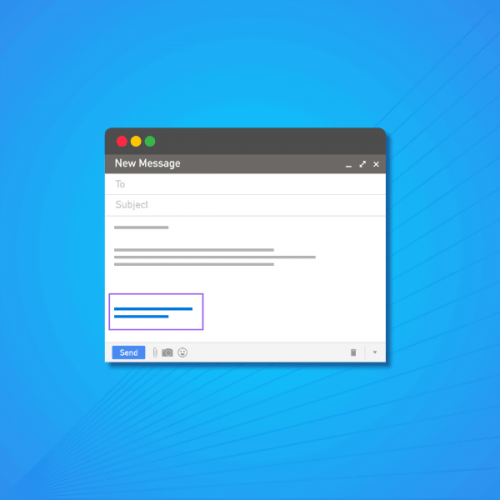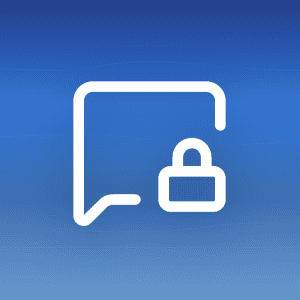Beginning your email with the right greeting is essential for making a positive first impression. Similarly, ending it properly ensures you leave the conversation on a positive note.
In this article, we will guide you on how to end an email, highlighting five of the best and five of the least recommended sign-offs for both casual and formal emails.
How to end an Email – Best Email sign-offs
- Regards
For formal emails where you want to keep things professional, this sign-off works well. But for friends or coworkers, it might feel a bit distant. Instead, try using “Kind regards” or “Best regards”
- Thanks / Thank you
Ending an email with a simple “Thanks” conveys gratitude, sets a positive tone, and can increase the response rate. It’s short, concise, and fits both informal and formal communication. Using it can also foster stronger relationships by expressing genuine appreciation and acknowledging the value of the recipient’s time and efforts.
- Sincerely
Using “Sincerely” to conclude an email lends a touch of formality and importance to your sign-off. It evokes the feeling of penning a letter with a feathered quill, finishing with an elaborate signature, and sealing it with wax. If that feels too formal or grand, you can soften it by opting for “Sincerely Yours.”
- Best
Best is another email closing that works in most formal or informal situations. It works so well that Business Insider named it the best email sign-off you can use. Of course, if you don’t like ending your emails with one-liners, you can also use “Best wishes” or “Best regards”
- Looking forward to hearing from you
This closing is most appropriate when you’re waiting for a response from the recipient, such as after offering your services or suggesting a partnership. It signals that the next move is up to them.
How to end an Email – Worst Email sign-offs
- Ciao / Bye / Rgrds / Cya…
While some of these expressions can be used when texting, it is strongly recommended to not use them in your emails. They are too informal to be used in professional correspondence.
- Love
Using “love” as a sign-off in professional emails can blur professional boundaries, potentially appear overly intimate, and lead to misunderstandings, especially in culturally diverse settings. It might seem inconsistent with formal content and can reduce your perceived credibility.
- No sign-off / Just a name
Not using email closing lines is like walking away in the middle of a conversation without saying as much as “goodbye.” It’s neither pleasant for the recipient nor very polite. Also, while you should always add your name in the email closing lines after the sign-off (“Best, [name],” “Sincerely, [name]”) you should never end your email with “[blank], [name].” It comes off as impersonal and distant.
- Have a blessed day / Remain blessed
Using faith-based sign-offs like “Have a blessed day” or “Remain blessed” in professional emails can be sensitive due to the diversity of beliefs in multicultural settings. It’s crucial to maintain a boundary between personal beliefs and professional communication to ensure clarity and respect for all recipients.
- Happy [day, holiday…]
Ending your email with this sign-off is a bit like guessing someone’s birthday – you might get it right, but there’s a good chance you won’t. If they don’t celebrate that holiday or read your email on the day you expected, it might come off as a bit awkward.
3 Things to Keep in Mind for the Best Email Closing Lines
Of course, there are many more email closing lines you can use besides these, so here are three things to keep in mind when ending them:
- Use different email sign-offs for formal and informal emails. Context is everything when it comes to email sign-offs. Some sign-offs, like “sincerely,” will sound too dressy if you’re sending it to a colleague or a friend, while on the other hand, “best” may sound too informal when sending it to the wrong person.
- Go formal when in doubt. If you’re in doubt as to whether you should be more business or casual (i.e., you don’t know the company culture or the boss you’re emailing), it’s safer to end your email with a more formal sign-off.
- The closing line should match the greeting. If you started your email with “Hi there!”, ending it with “Sincerely” or “Regards” doesn’t make a lot of sense. Ensure consistency in how you address your recipient.
Conclusion
Every conversation, whether in person or online, has its conclusion. Emails, too, need that final touch to wrap up our thoughts and intentions.
By following these guidelines on how to properly end an email, you’re not just putting a full stop to a message; you’re leaving the door open for further dialogue and ensuring that this isn’t your last exchange with the recipient. It’s about making your sign-off meaningful and inviting further communication.
Do you have a keen interest in email etiquette? Dive into our ultimate guide and become a master of email communication.




